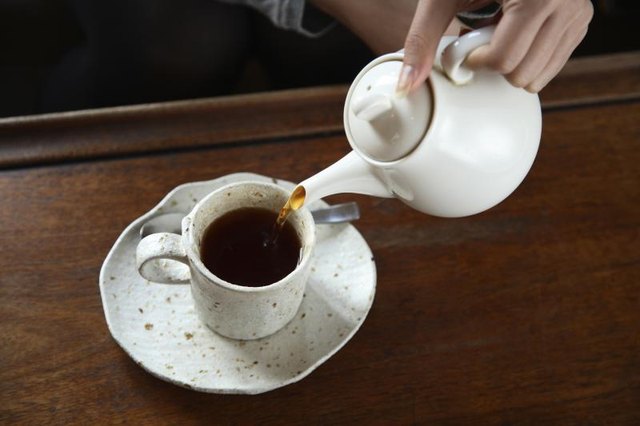
If you enjoy a cup of Lipton tea, you probably like its flavor and aroma and might drink it at breakfast or use it as a daytime pick-me-up. But in addition to its value as a beverage, tea may also have significant health benefits. Tea's natural compounds, which belong to a class of phytonutrients called flavonoids, may help keep you healthy and lower your risk of several potentially serious chronic conditions.
Antioxidant Components
The leaves of a plant (Camellia sinensis) are used to make most teas, including those produced under the Lipton brand. White and green teas contain fresh, unrolled leaves, while leaves in black tea are first rolled and broken before drying. Because of this difference, compounds in white, green and black teas are also somewhat different. But all contain flavonoids, including theaflavins and catechins, which are in black and green tea, respectively. They are both potent antioxidants, according to a study published in the September 2001 issue of the "Journal of Nutrition." Antioxidants help protect your body from free radicals, unstable molecules that form in your body and, over time, can raise your risk of cancer, heart disease and other disorders.
Cardiovascular Benefits
Research suggests that consuming tea may benefit your heart and blood vessels, potentially reducing your risk of heart disease and stroke. For example, a study published in the March 2013 issue of "Annals of Epidemiology" that followed almost 75,000 men and women for 10 years found that daily consumption of 4 or more cups of black tea was associated with a lower the risk of stroke. Drinking tea might also help relax blood vessels, widening them and helping reduce blood pressure, and it could also lower your risk of atherosclerosis, or hardening of the arteries, according to other research studies. Although research in this area is promising, large clinical trials are still needed to confirm these benefits.
Cancer Prevention
Research also suggests that compounds in white, green or black Lipton tea might help protect you from carcinogenic chemicals and suppress or prevent the growth of cancer. Although much of this research has been done in the laboratory, several studies with human subjects produced promising results. For example, a large study published in 2002 in "Cancer Causes and Control" studied 34,000 women for 12 years. It found that those whose diet was rich in tea catechins had significantly less rectal cancer than controls, while stomach, pancreatic and blood cancers also tended to be reduced, although this wasn't statistically significant. Another study published in 2013 in "Nutrition and Cancer" found a similar association between green tea drinking and lower rates of esophageal cancer.
The Bottom Line
Drinking Lipton tea regularly might have additional benefits, including boosting your memory and cognition, promoting weight loss, helping control blood sugar and reducing your risk of type-2 diabetes, supporting your immune system and improving your oral health, although research is still in progress in all these areas. But tea also contains caffeine, which can affect your ability to fall asleep or make you jittery or shaky, especially if you drink lots of tea. You can avoid these possible problems by choosing decaffeinated varieties of Lipton tea, but keep in mind that decaffeination removes some of the flavonoids, with the amount depending on the process used. If you have questions about drinking tea and its possible benefits, talk to your doctor.




